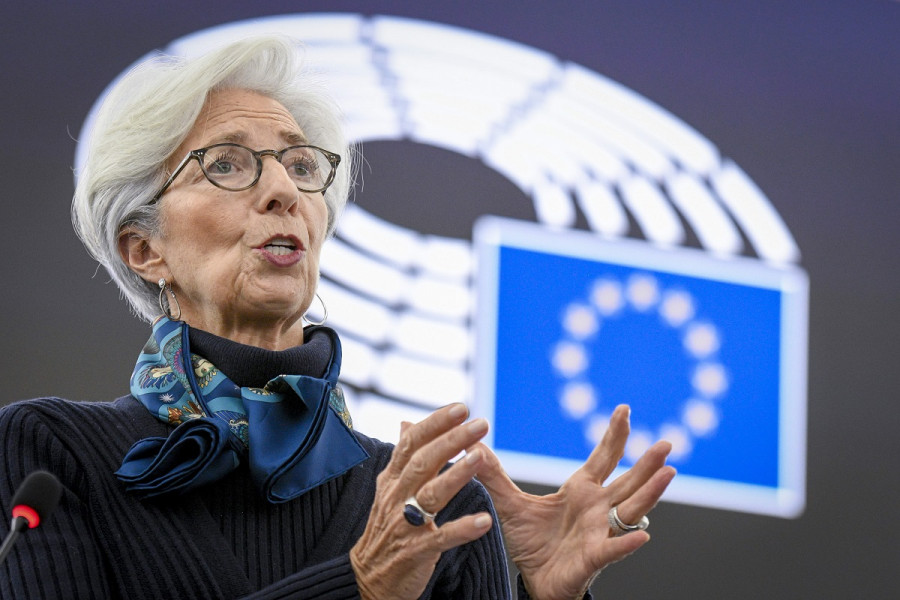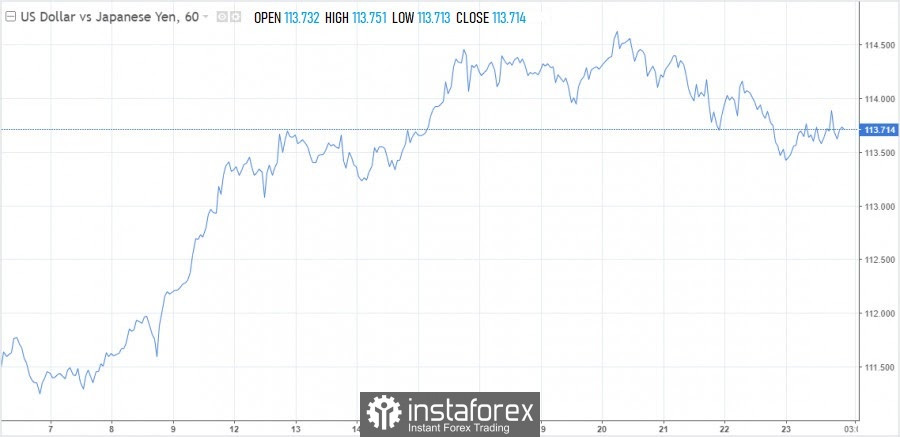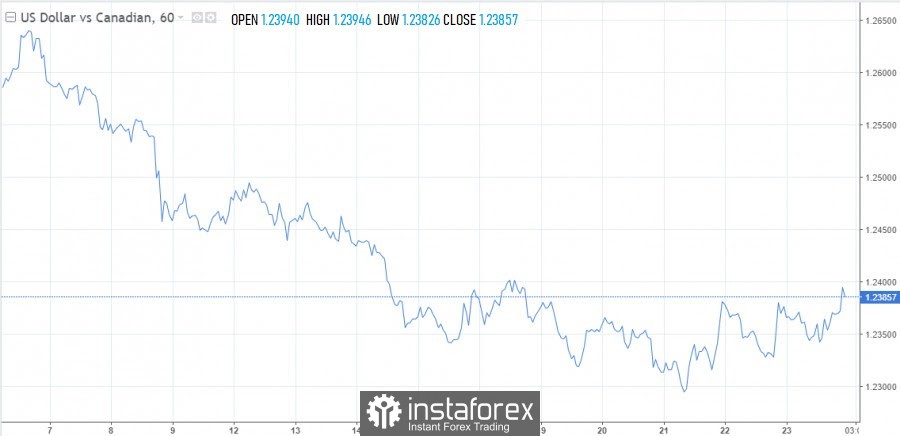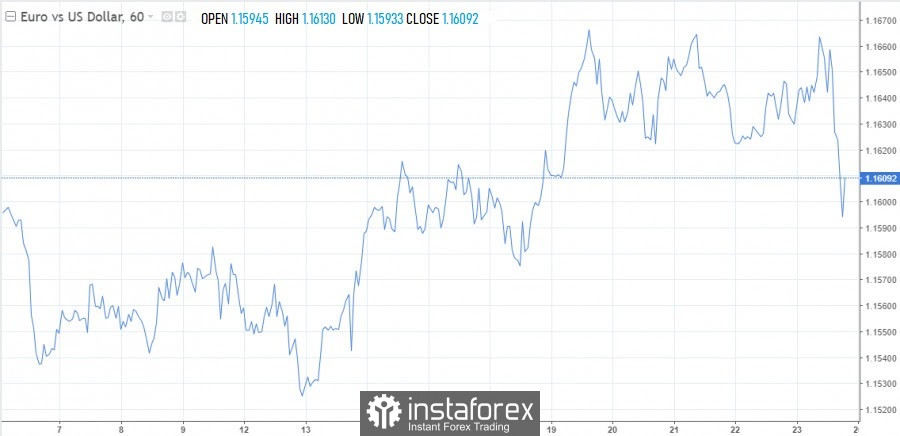
Inflation will not surprise anyone anymore. The fact that it will be with us for a long and indefinite time, no one disputes. Another fear, stagflation, is settling more and more densely in the minds of market players and causing concern. Fewer and fewer respondents believe that inflation and economic growth will be above the long-term trend for some time. At the same time, there are more respondents who say that the global economy is waiting for a combination of high inflation and weak growth rates.
In the financial markets, this is noticeable by the flight from long-distance bonds, which lose the most in fair value during an inflationary collapse. More recently, only the United States stood out here, which, by the way, supported the dollar. Now the sales have spread to the eurozone, England, Japan and other countries with low interest rates.
The sell-off marker is still noticeable, so the upcoming meetings of the Bank of Canada, the European Central Bank and the Bank of Japan will be considered in the context of the reactions of these regulators to the acceleration of inflation. There is no question of raising rates, but comments on the pace and stability of inflation will show the central bank's mood and may cause volatility in the euro, yen and Canadian dollar, depending on the rhetoric of the heads of regulators.
Bank of Japan
If the Bank of Japan is still very far from doing something to stabilize inflation. Analyzing the USD/JPY chart, it can be seen that the corrective growth to 3-year highs is coming to its logical conclusion. The quote has approached the lower border of the trend channel, from where support is expected.
It looks very likely that the USD/JPY pair interrupted a multi-week series of growth and entered a consolidation phase on Monday in the area of 113.50. In case of a breakdown of the 113.38 mark, the quote may deepen the drawdown in the direction of 112.56 and then has the opportunity to go to 111.66.

If USD/JPY bulls break through and settle above 114.55, the price will go higher to 115.60, and then to 117.06.
Bank of Canada
In Canada, the situation is different. At a meeting on Wednesday, the local central bank is likely to announce a new reduction in the quantitative easing program. The picture of the labor market allows us to do this. However, given the weakening of inflation in August and September, the Bank of Canada will refrain from hawkish actions and comments. Meanwhile, sentiment on the Canadian dollar will largely depend on forecasts for further stimulus cuts. It is possible that the central bank will officially announce plans to end QE this year.
As for the reduction of incentives at the next meeting, it is already fully embedded in the price, this will not be enough for a new rally. The Canadian dollar has also benefited from the rise in oil. According to ING, the balance of risks is now shifting towards growth for USD/CAD next week. Data on Canada's economic growth, which will be published on Friday, will provide little support to the loonie.
The key support area is around 1.2200.

ECB
The ECB continues to insist on its own: no changes in monetary policy are expected in the near future. At the same time, the markets have their own opinion on this matter. One 10 bp rate hike is currently envisaged. by the end of 2022. If the ECB continues to recite its mantra, these expectations will be "blown away", which will have negative consequences for the euro.
It is unlikely that EUR/USD will leave the narrow range of 1.1620-1.1670 for a long time before the ECB meeting. Stronger support/resistance levels are located at 1.1580 and 1.1700.

In the meantime, the markets are trying to predict what ECB President Christine Lagarde will say at this week's meeting. It's hard to pretend that nothing serious is happening and ignore the price pressure. It is impossible to silence facts such as rising energy prices and supply difficulties. The meeting on Thursday can be anything but boring. The gin from the bottle should be released, but how aggressive will it be?
So, there are a lot of questions for the ECB in the markets, here are the key five:
What are the consequences of high inflation?
The most that Lagarde will say is that the price pressure may last longer than expected. She will not back down from the dovish policy in any way. Every word and tone in the voice are strictly thought out and rehearsed, Lagarde did not allow even one hawkish note, otherwise it will scare the markets, who will think of everything else for her.
Mismatch of expectations regarding rates: markets are waiting for an increase, the ECB is not. Where to look for the truth?
Indeed, market expectations are not consistent with the ECB's extremely dovish position. As mentioned above, the markets are set to raise the rate by 10 bps by the end of 2022. Perhaps this is due to the aggressive revaluation of the monetary policy of the UK and US, where investors are now waiting for a tightening of monetary policy. Lane has already made it clear to the markets that this does not apply to the ECB, Lagarde should remind again on Thursday.
Societe Generale is confident that the central bank will remain hawkish. At the same time, the markets can continue to insist on their own – to bet on an earlier tightening by the ECB.
When will the price pressure ease and what kind of figure will it be?
Inflation in the eurozone (3.4%) is at its highest level since 2008. By the end of the year, the indicator may approach 4%. It is good if everything is within expectations, but what if it is exceeded and there are signs of an impact on wages.
Not all politicians in Europe believe that high inflation should be ignored. For example, Bundesbank's Jens Weidmann, an opponent of ultralight monetary policy, last week once again spoke about the threat that comes from inflation, and announced his plan to resign in early December.
Economic risks: are there any?
If we compare the situation that was during the September meeting and the one that is happening now, there are changes, and not the most pleasant ones. These are rising energy prices and supply chain tensions. Germany has already felt all these charms, and the leading economic institutions have worsened their joint growth forecast for 2021 to 2.4% from 3.7%.
What will happen after PEPP?
The 1.85 trillion euro Emergency Assistance Program (PEPP) ends in March next year. In December, a decision will be made on what's next, but in the meantime, debates are underway. ECB spokesman Francois Villeroy de Galau believes that the ECB should retain some of the flexibility offered by PEPP when it returns to a more traditional policy.
Meanwhile, the central bank, judging by a recent report, is preparing a new bond purchase scheme. Thus, he intends to prevent disruptions in the market when PEPP ends, in addition to the existing open asset purchase program for 20 billion euros per month.
The material has been provided by InstaForex Company - www.instaforex.com